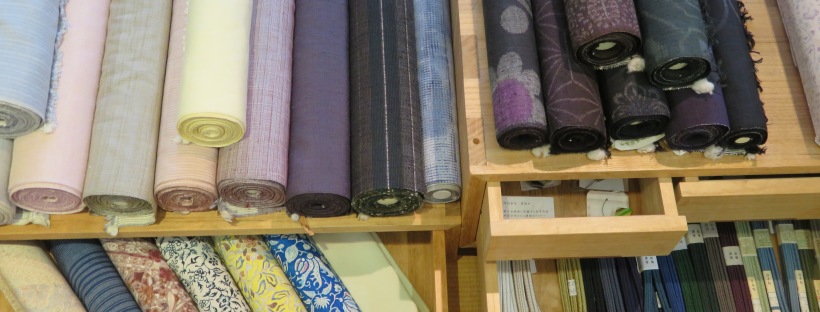This Japan Today article introduces Nanzoin, site of one of the few reclining Buddha statues in Japan, and one of the largest bronze statues in the world. (Archived article published in Japan Today)
Tsumugi Silk: Poor Man’s Fabric Turned Luxury Folkcraft
This article in All About Japan explains Japan's handicraft of homespun silk and how what was once the only silk fabric permitted to commoners has become a highly desirable luxury folk craft. (Archived article originally published in All About Japan)
Naruko Onsen: Historical Hot Spring and Much, Much More
This Japan Today article examines the delights of the onsen area in northwestern Miyagi Prefecture known as Naruko Onsen. There is a lot to do here, yet for many it is an "off the beaten path" destination. (Archived article published in Japan Today.)
Traveling through a museum on board a train
The people of Miyagi Prefecture are justifiably proud of Date Masamune (1567-1636), a feudal lord in this region, known at the time as the Sendai Domain, who sponsored various pubic works and policies that promoted prosperity for the domain and its people. A surprising amount of the infrastructure he created all those centuries ago is … Continue reading Traveling through a museum on board a train
Bucking the Trend: Oita Prefecture’s plan to boost population is succeeding where Japan’s government has failed
This article, published in the March 2024 edition of Number 1 Shimbun, examines various programs in Oita Prefecture designed to reverse the prefecture's demographic decline. (Archived article from Number 1 Shimbun)
Beppu: A Century as a Sightseeing Destination
This is Part II of an article about Beppu's centenary as a tourist destination. Part I examined the area's famous hot springs for bathing and health and this article looks at the sightseeing options. (Archived article published in Japan Today.)
Beppu celebrates a century as a modern hot springs resort town
This article in Japan Today is part 1 of 2 outlining the various aspects of Beppu, one of Japan's most prolific hot springs areas. (Archived article published in Japan Today)
Symbolic Soba for the New Year
My friend Etsuo recently suggested that we get together for dinner at Sunaba, one of his favorite soba restaurants. "We can have toshi-koshi soba," he exclaimed, excitedly. Ah, yes! Toshi-koshi soba, a serving of buckwheat noodles eaten at the end of the year. The noodles are symbolic in a couple of different ways. Soba noodles, … Continue reading Symbolic Soba for the New Year
Miyashita Park: green space in the sky
Ghibli may have created an animation of Castles in the Sky, but Tokyo's Shibuya Ward has created a real-life park in the sky. Miyashita Park was once a rather forlorn little playground park wedged between Meiji-dori and the Yamanote train line, just north of Mitake-dori (ie, a few hundred meters north of Shibuya station). The … Continue reading Miyashita Park: green space in the sky
The Nihonbashi Seven Lucky Gods Walk: An exploration steeped in history and tradition
Seven Lucky Gods walks are a popular new year's activity and this Japan Today article is published just in time for readers in Tokyo to use it in the coming new year period. (Note, there's a list of other walks at the end, too.) Since the article does not include a dynamic map, one is … Continue reading The Nihonbashi Seven Lucky Gods Walk: An exploration steeped in history and tradition
Sushi: Breakfast of Champions!
An early morning visit to the largest seafood market in the world is still high on the must-do lists of many visitors to Tokyo, even after the market moved to its new location in Toyosu a few years ago. A visit to the Toyosu Seafood Market is more “sanitized” than one to its predecessor, Tsukiji--at … Continue reading Sushi: Breakfast of Champions!
Kinomiya Shrine: Ancient and Insta-worthy
This article in Japan Today takes readers to Atami's Kinomiya Shrine, a picturesque location steeped in legend. (Archived article published in Japan Today).











